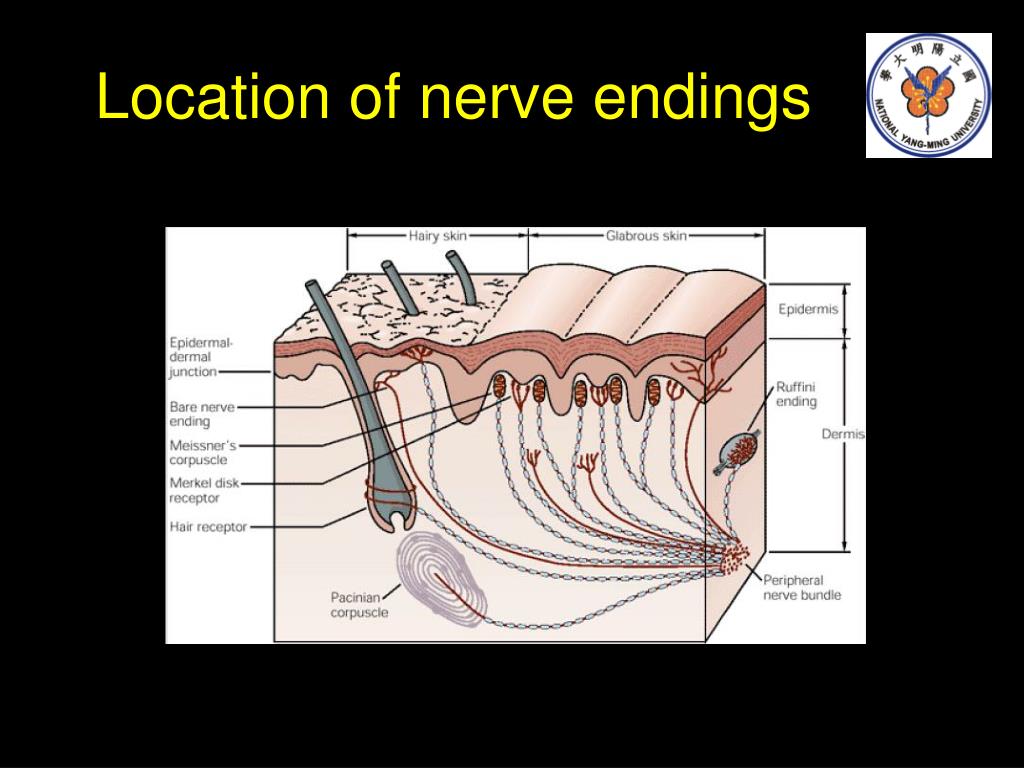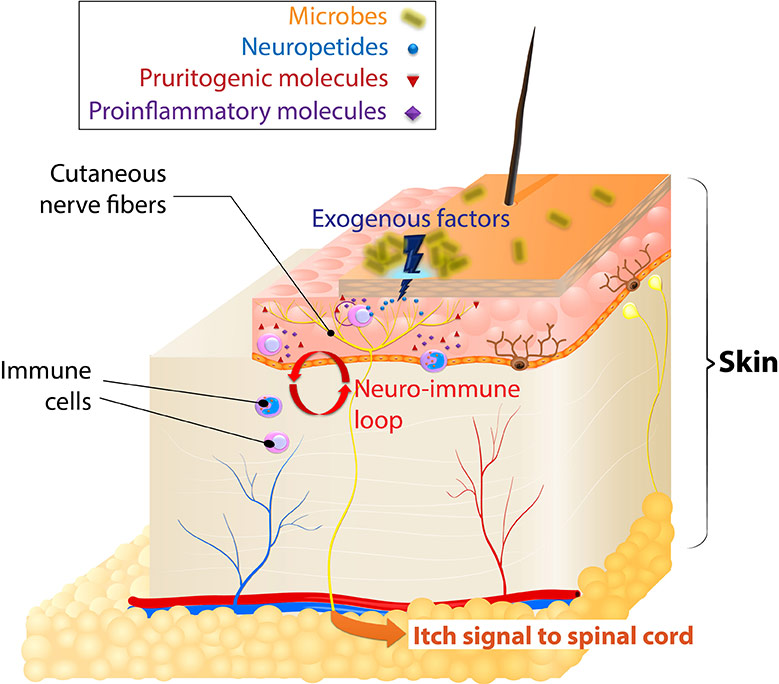

These categories are based on the nature of stimuli each receptor class transduces. Sensory receptors are classified into five categories: mechanoreceptors, thermoreceptors, proprioceptors, pain receptors, and chemoreceptors. (credit: modification of work by Don Bliss, National Cancer Institute)

FREE NERVE ENDINGS SKIN
Mammalian skin has three layers: an epidermis, a dermis, and a hypodermis. The hypodermis, which holds about 50 percent of the body’s fat, attaches the dermis to the bone and muscle, and supplies nerves and blood vessels to the dermis. Below the epidermis and dermis is the subcutaneous tissue, or hypodermis, the fatty layer that contains blood vessels, connective tissue, and the axons of sensory neurons. Below this, the much thicker dermis contains blood vessels, sweat glands, hair follicles, lymph vessels, and lipid-secreting sebaceous glands ( Figure 17.4). The epidermis serves as a barrier to water and to invasion by pathogens. It is relatively thin, is composed of keratin-filled cells, and has no blood supply. Recall that the epidermis is the outermost layer of skin in mammals. A variety of receptor types-embedded in the skin, mucous membranes, muscles, joints, internal organs, and cardiovascular system-play a role. Somatosensation occurs all over the exterior of the body and at some interior locations as well. Somatosensation is also known as tactile sense, or more familiarly, as the sense of touch. Somatosensation is a mixed sensory category and includes all sensation received from the skin and mucous membranes, as well from as the limbs and joints.

Perform the following three sets of steps on the given integral:Ī.


 0 kommentar(er)
0 kommentar(er)
